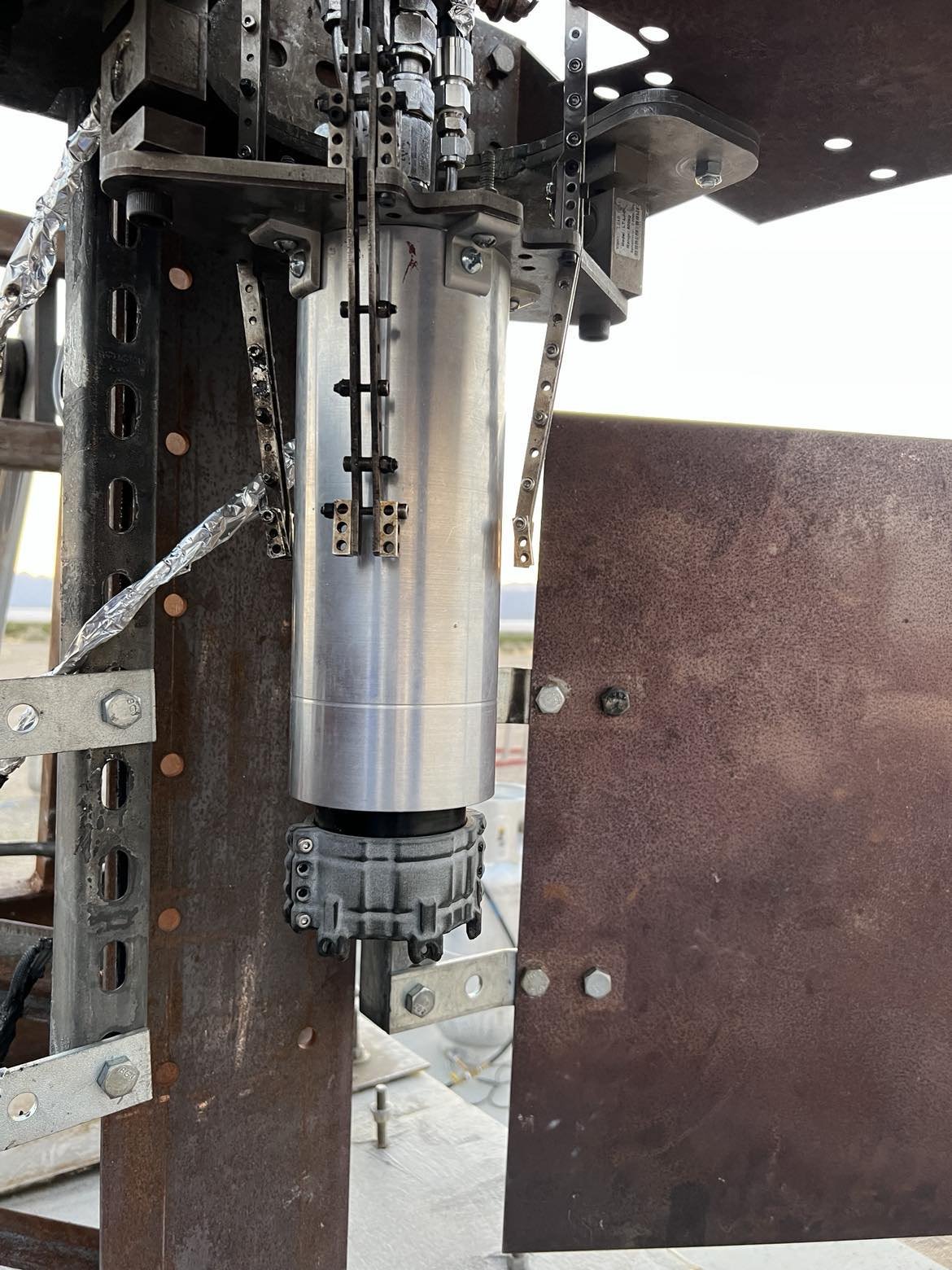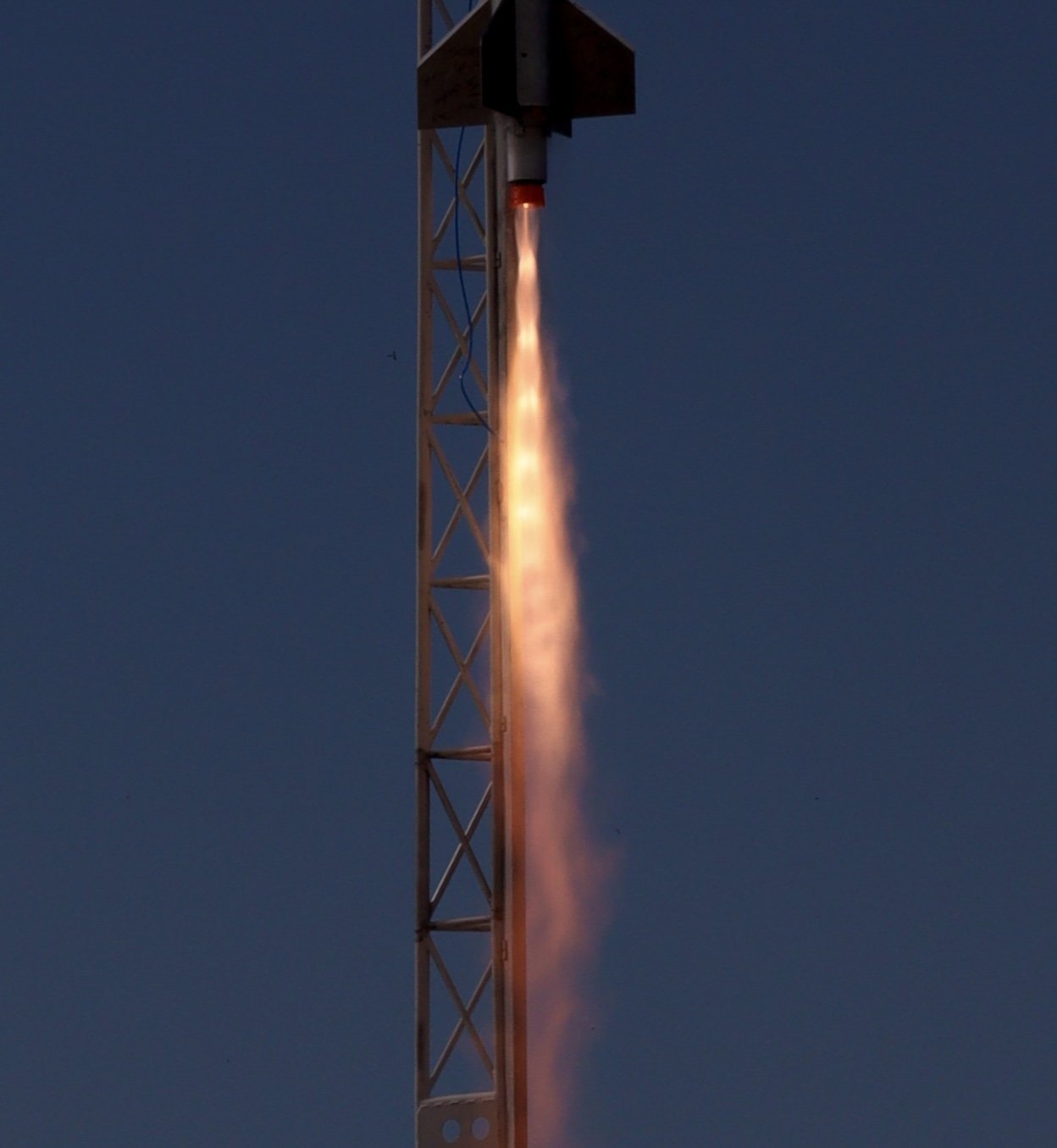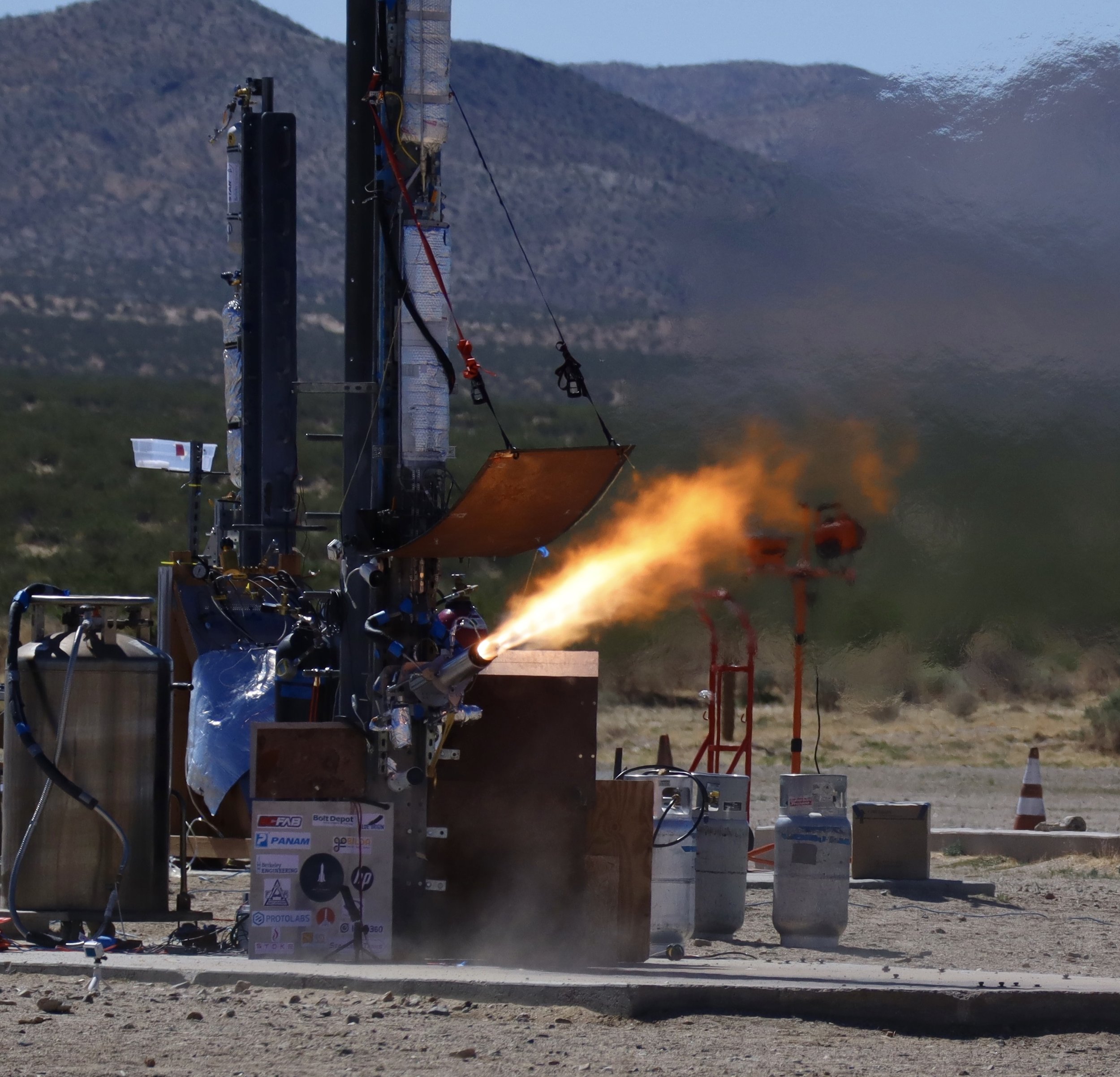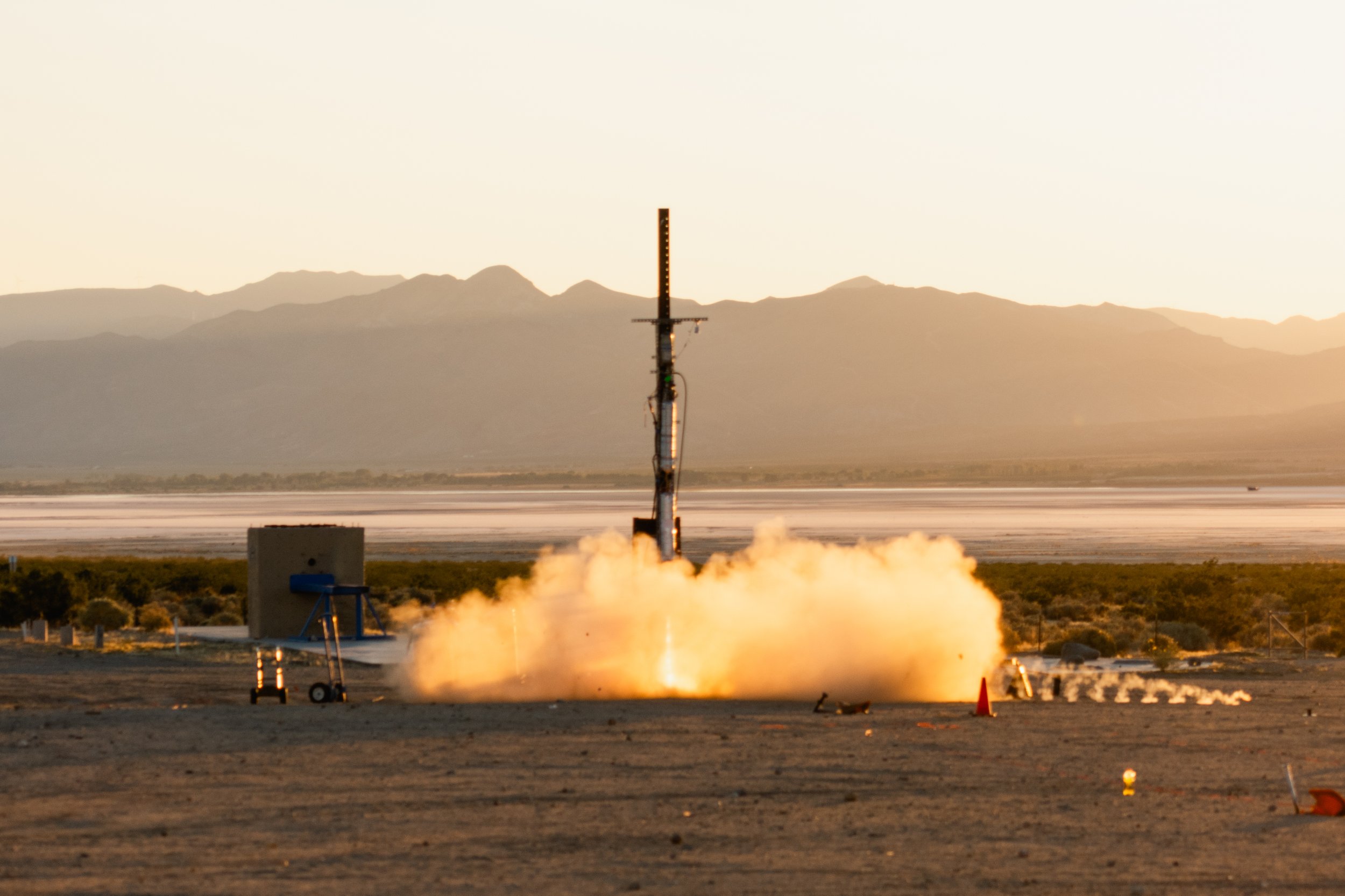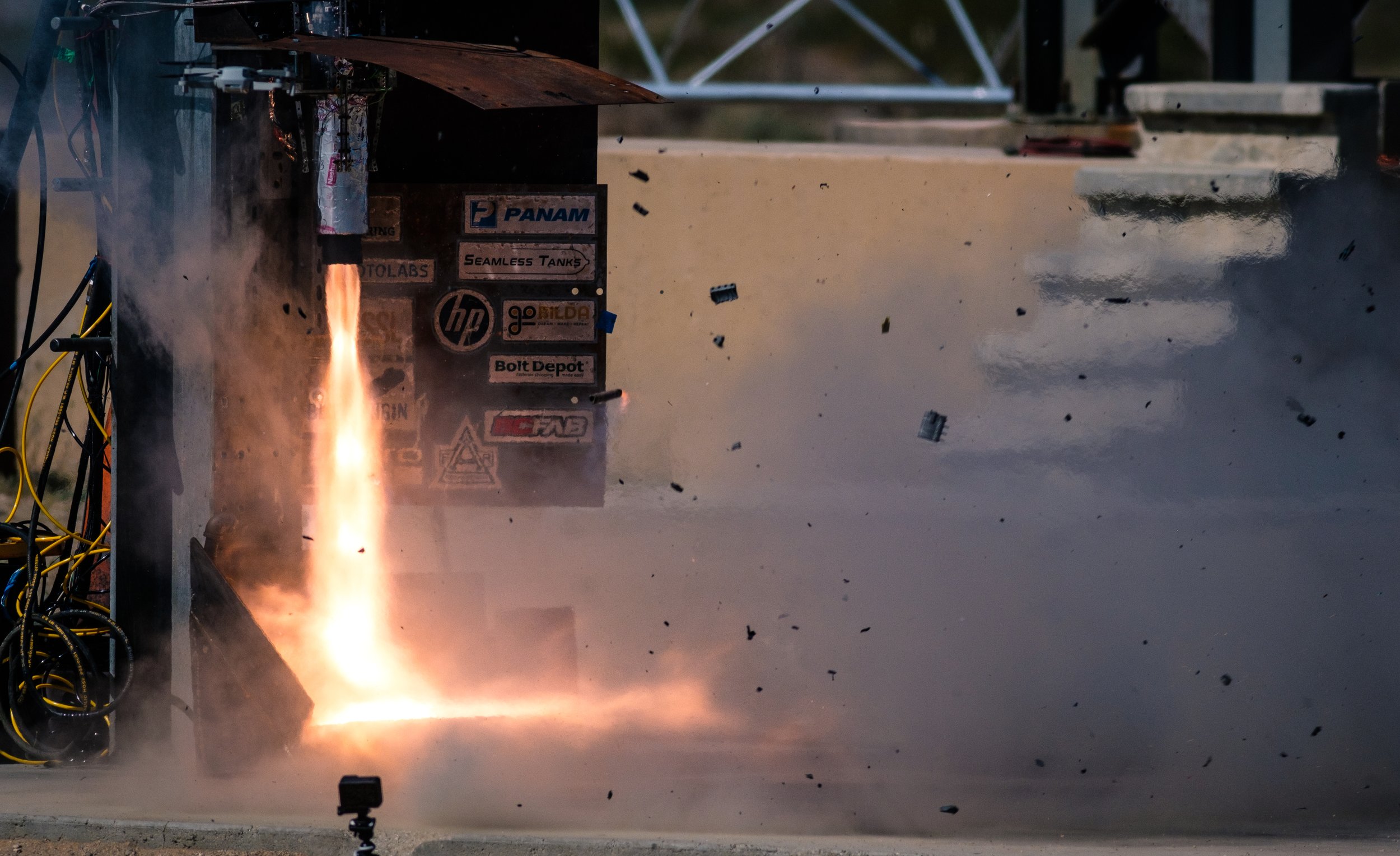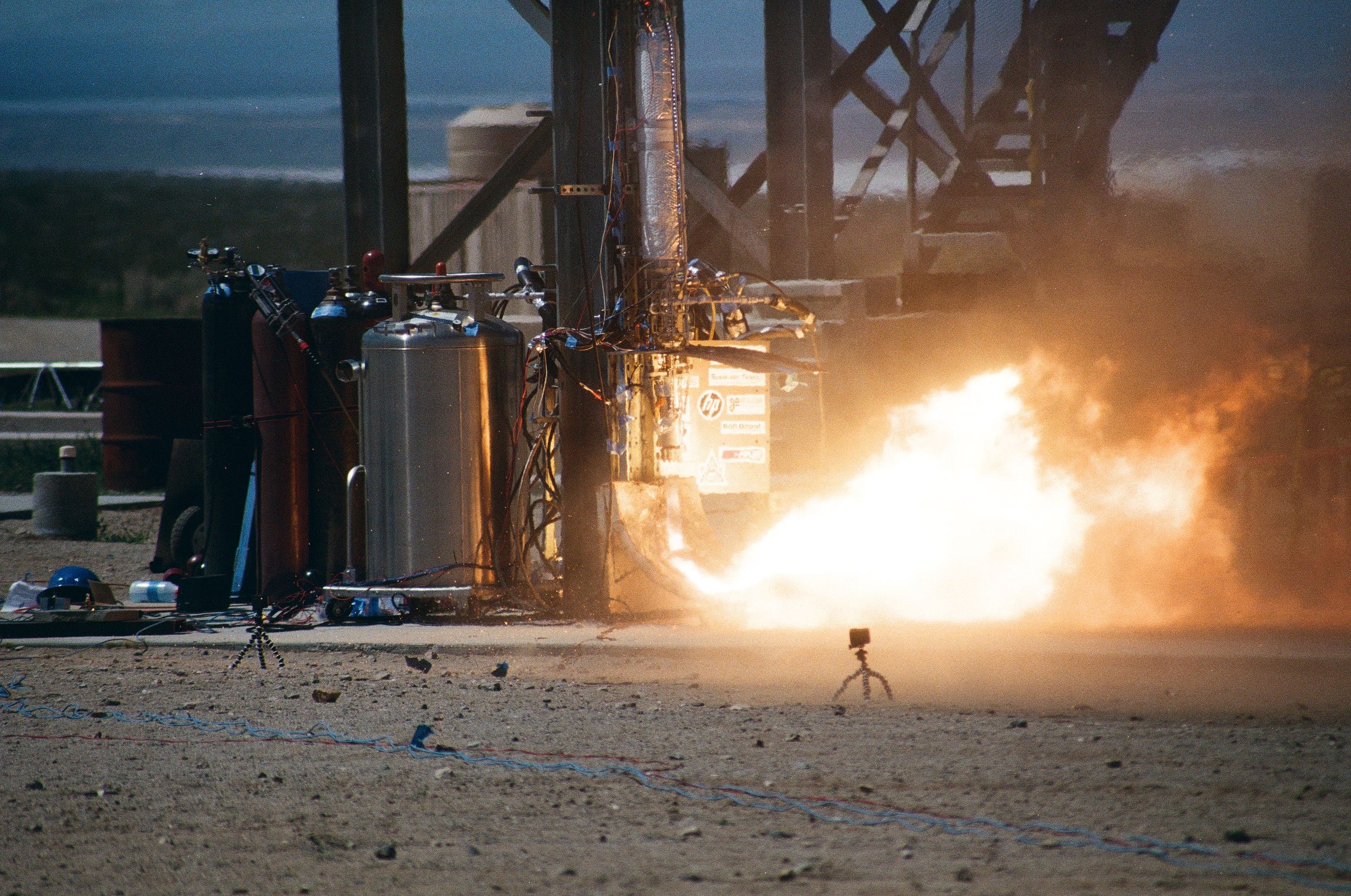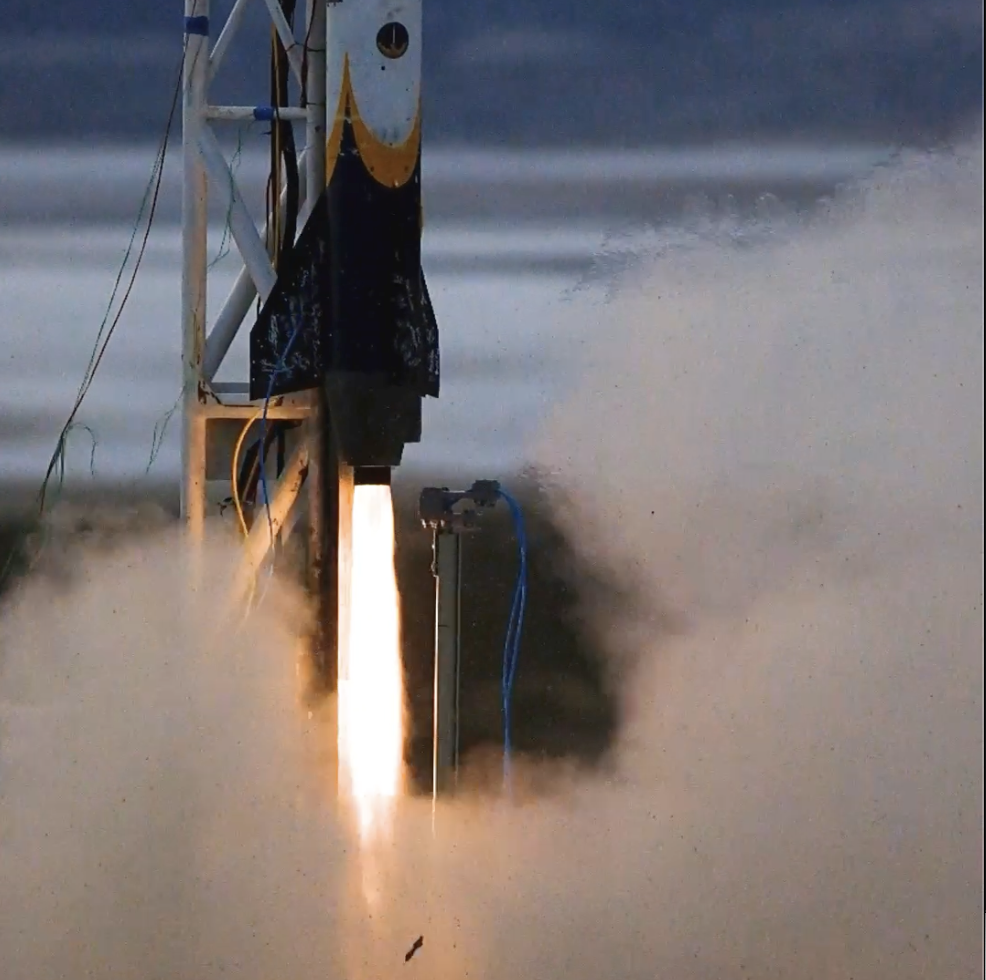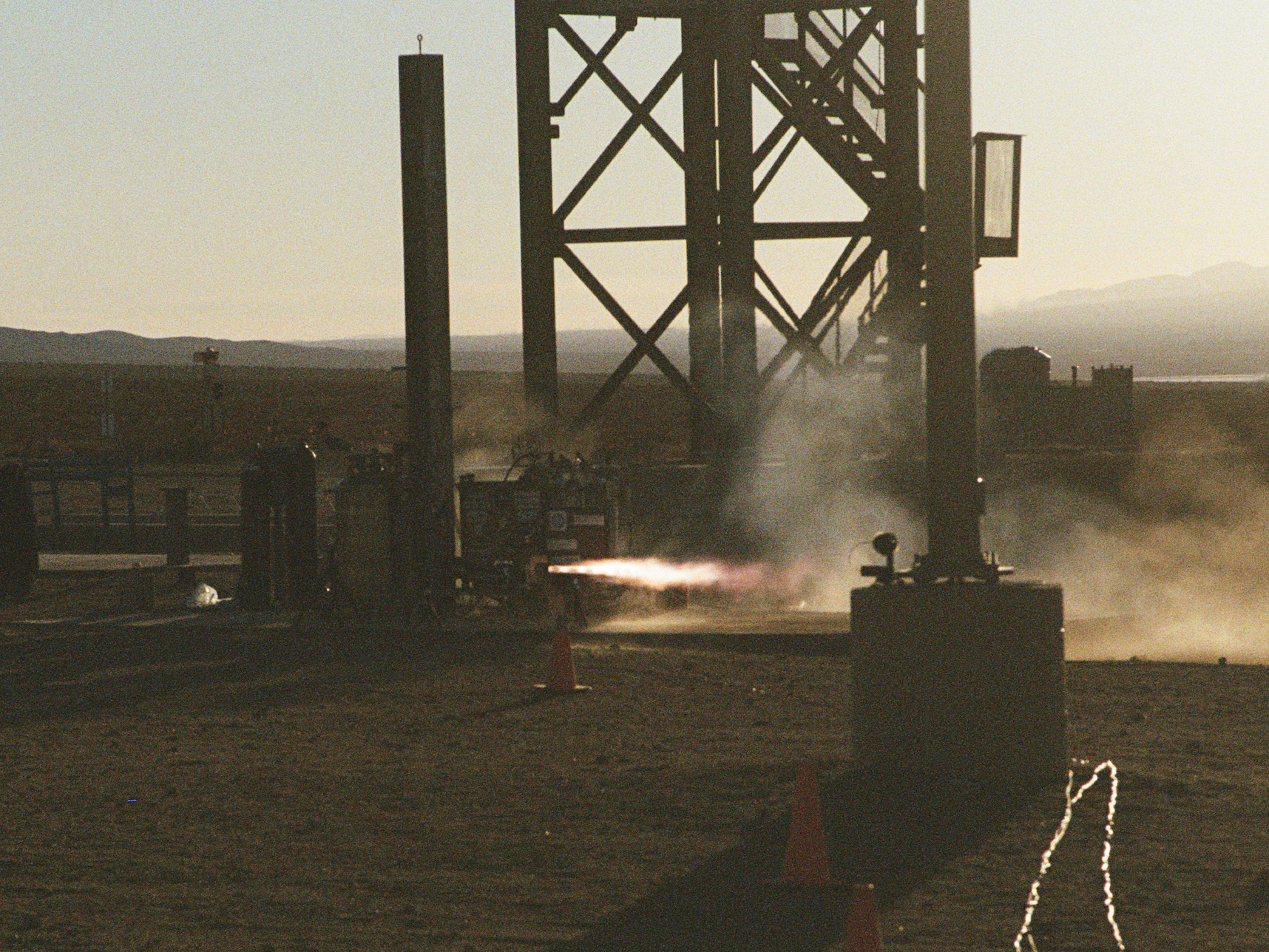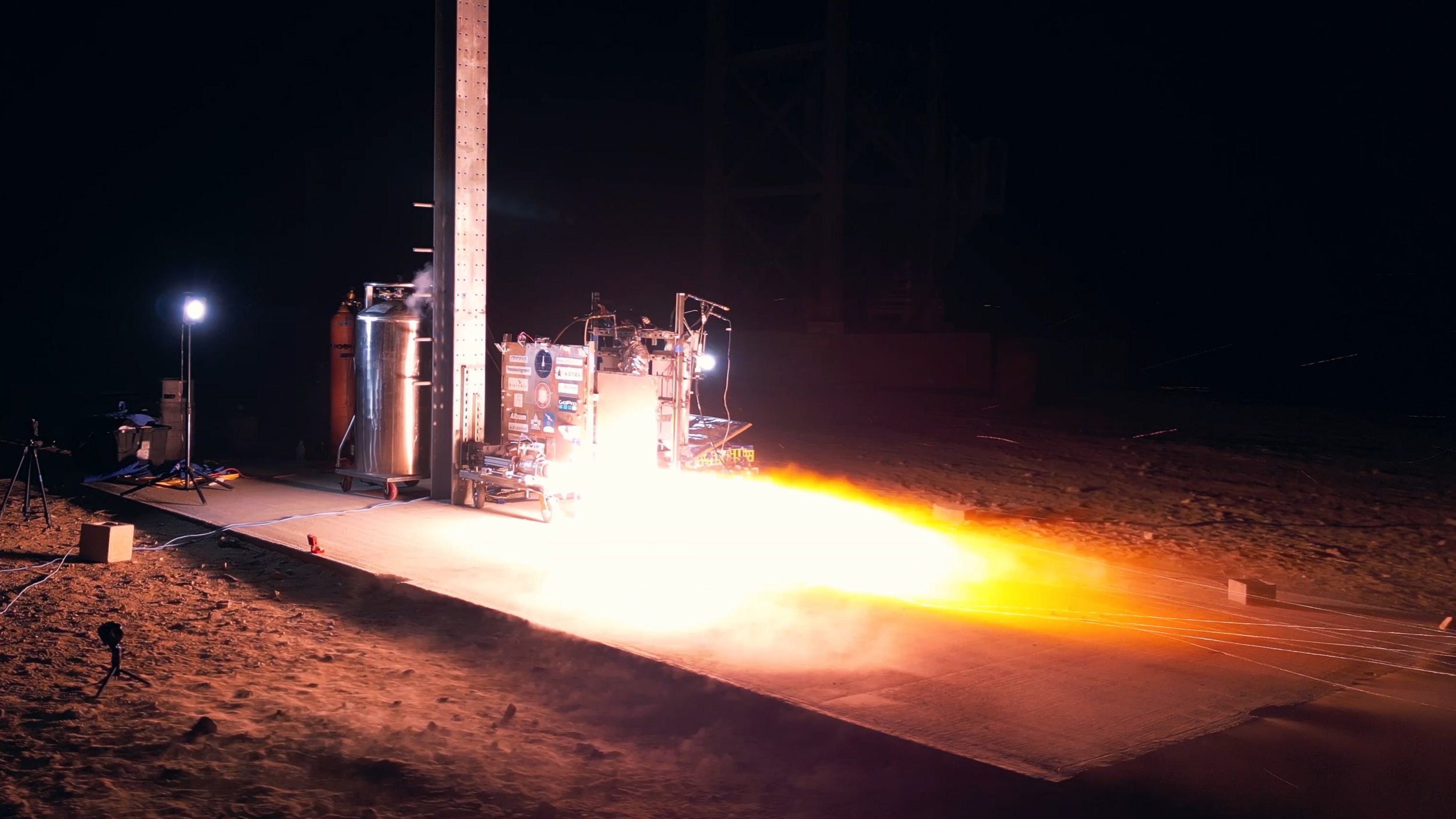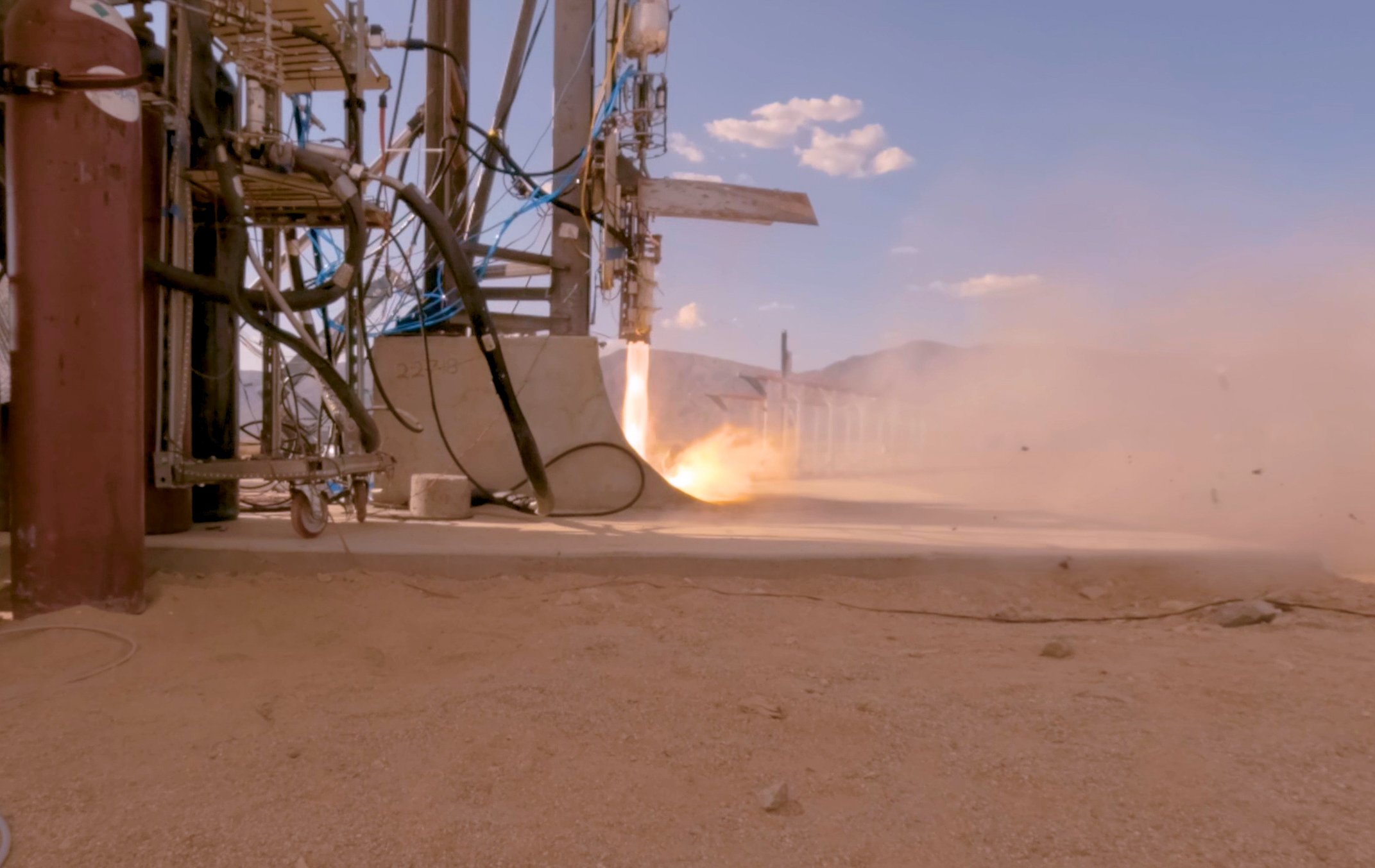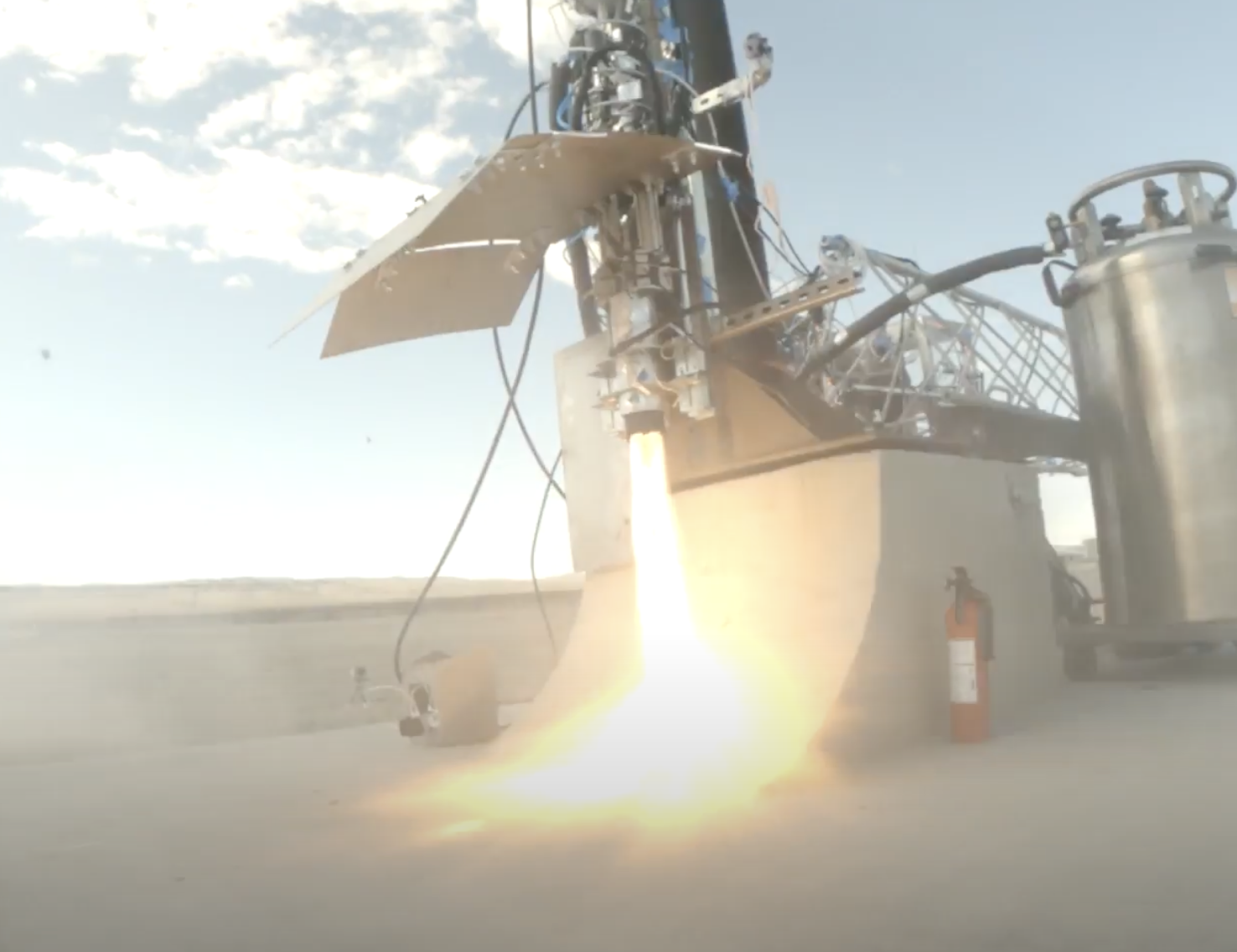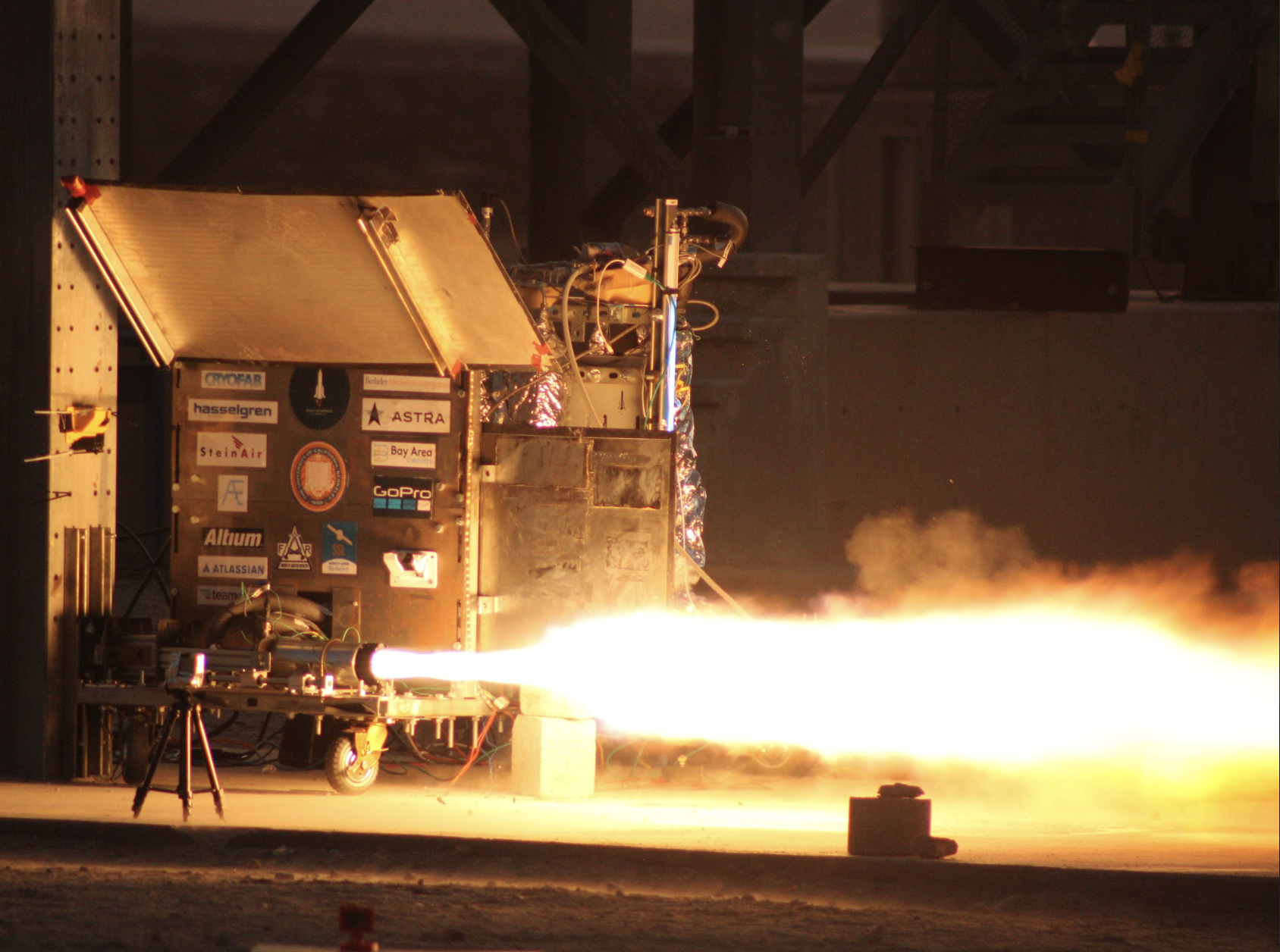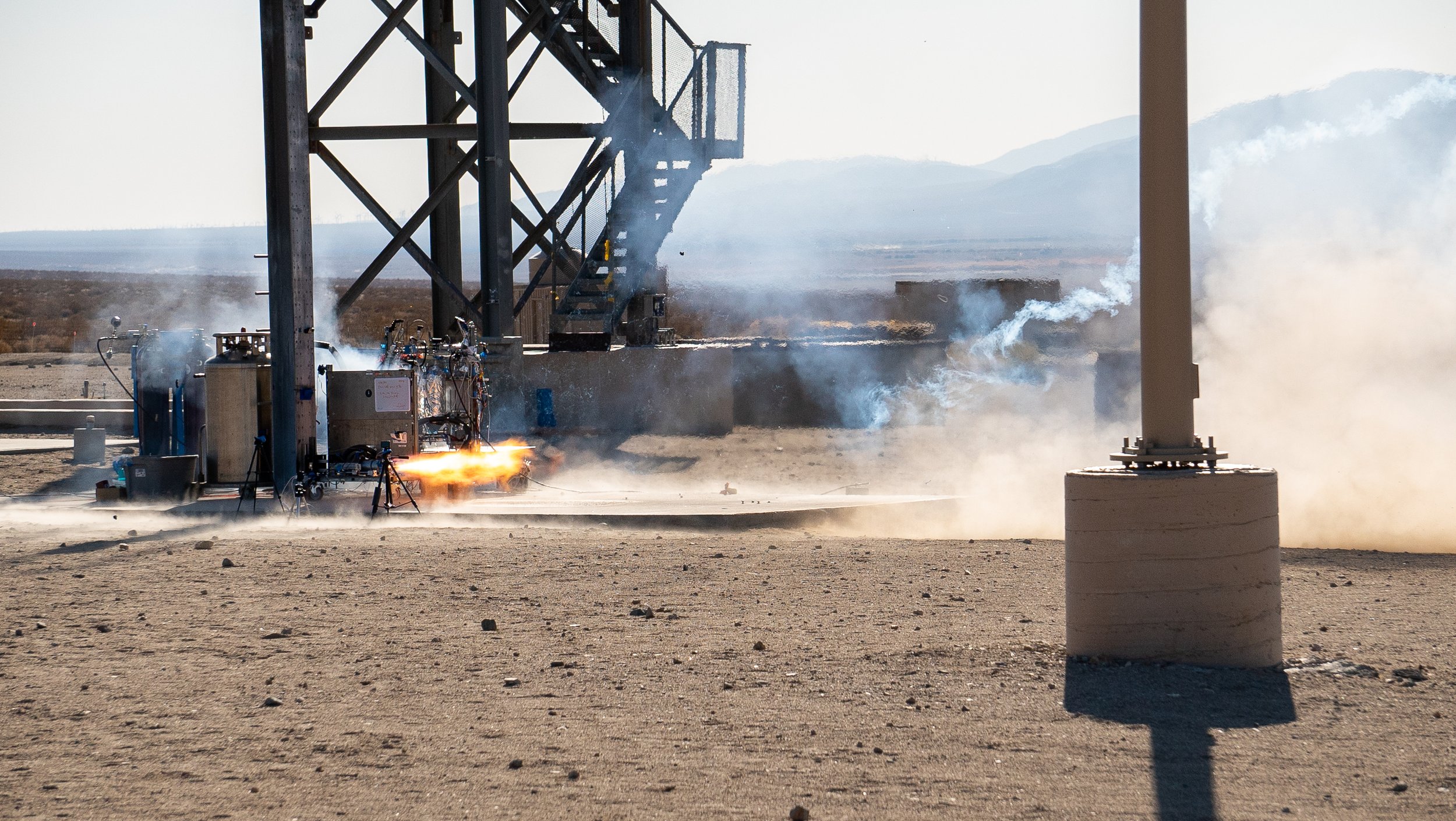23 hotfires, 2 launches
LIGHTBULB is SEB’s ablative engine, tested and perfected from 2021 to 2024. LIGHTBULB propelled the flights Eureka-1 and Eureka-2, and demonstrated its reliability to support rapid iteration over many testing campaigns.
LIGHTBULB HOTFIRES AND LAUNCHES, 2021 - 2024
DESIGNING LIGHTBULB
The engine was designed with three main constraints: reusability, quick iterability of components, and the size of the nozzles commercially available. The nozzle size influenced the overall dimensions of all the parts of the engine. Remaining design decisions were made for simple manufacturing and quick turn around on design iterations between tests.
THE INJECTOR
The injector is the heart of the engine, the mixing point of the rocket’s fuel and oxidizer. The Lightbulb engine uses a pintle design injector. The oxidizer enters the pintle shaft, and exits in a radial pattern through the pintle cap. Fuel is injected into a small chamber, where it is distributed uniformly by a diffusion plate. It then exits in a circular pattern through a thin annulus between the bottom of the injector and the pintle shaft. The last line entering the injector is a pressure transducer, which measures injector pressures throughout the burn. As the propellants exit, they meet and create a cone-shaped pattern, creating a highly flammable mixture. The injector is protected from the combustion by a seal disk.
COMBUSTION CHAMBER
After propellants leave the injector, they enter the combustion chamber. They reach temperatures of around 2800°C. To protect the aluminum chamber, two layers of phenolic composite ablative are used. These ablatives slough off layers as they are heated through the course of the burn, keeping the combustion chamber cool.
THE NOZZLE
As burning gases exit the combustion chamber, they are accelerated by the nozzle. While combustion is chaotic, the nozzle concentrates the direction of combustion downwards to accelerate the rocket upwards. The diameter of the nozzle throat is calculated to best accelerate these ionized gases. Eureka-I used graphite nozzles, given these ablate less than for other materials, such as phenolic. Both graphite and phenolic nozzles have been used and characterized throughout our many hotfire tests.


